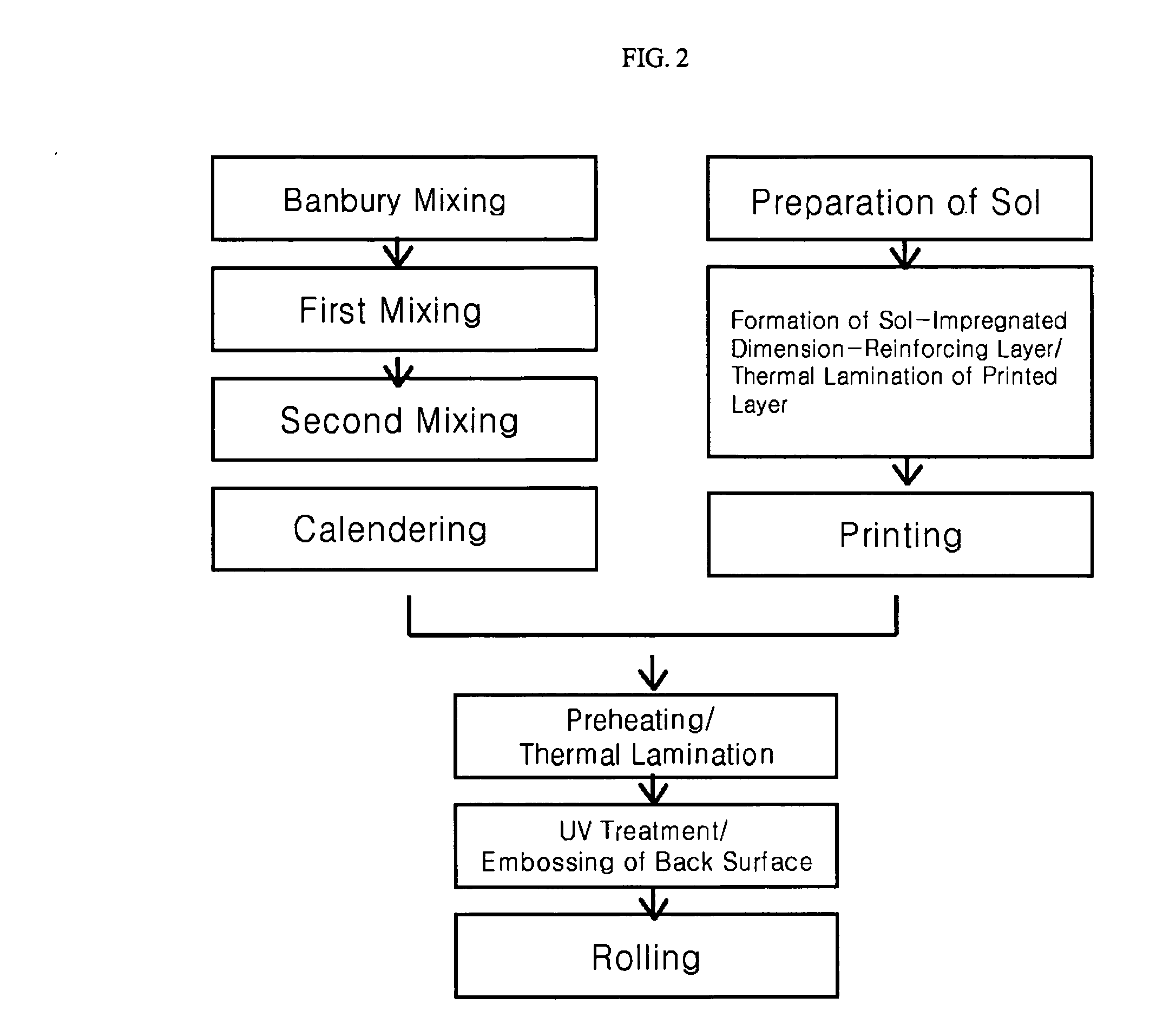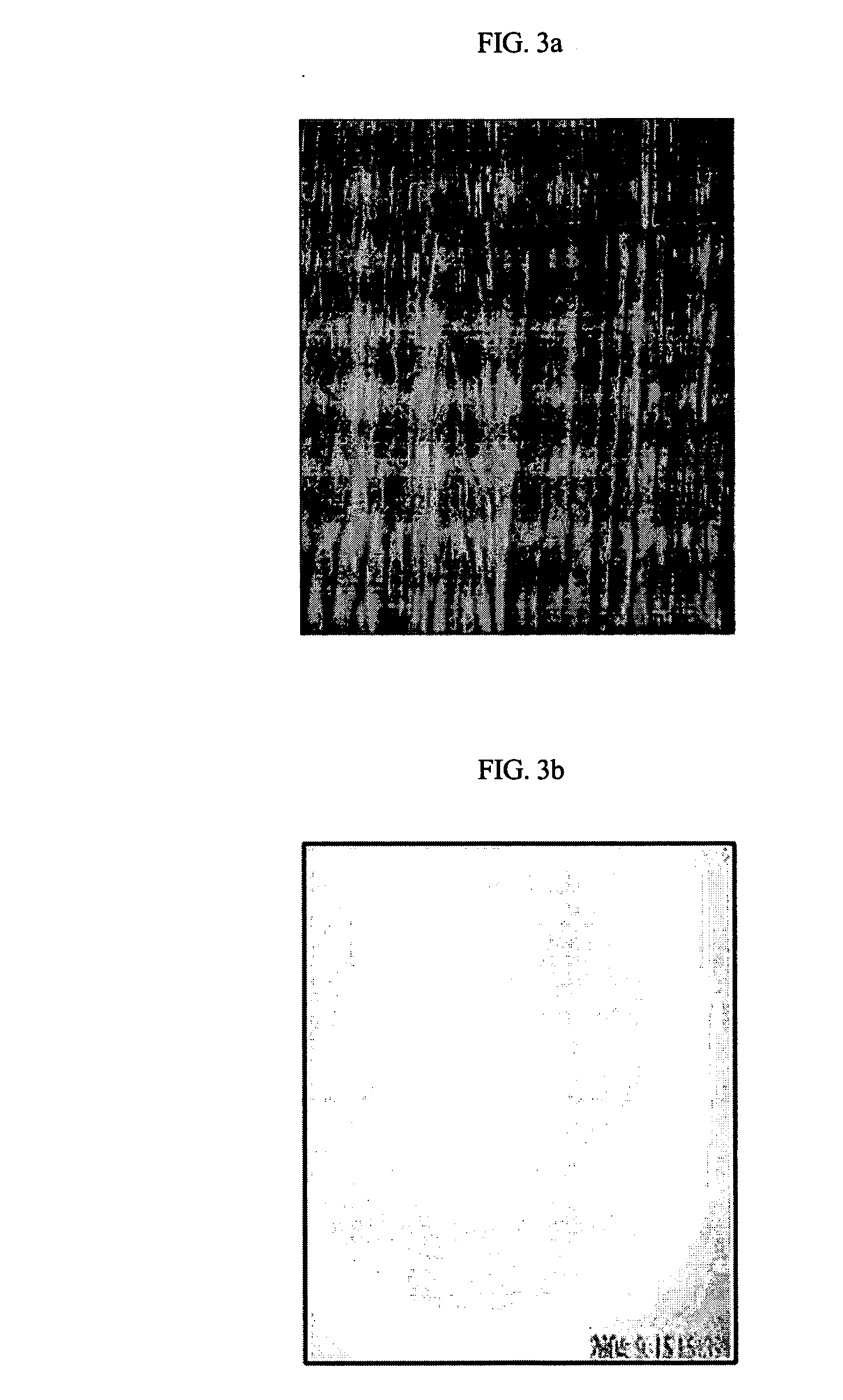Non-PVC flooring made of thermo plastic elastomer and method for producing the same
a technology of thermoplastic elastomer and non-pvc flooring, which is applied in the direction of synthetic resin layered products, manufacturing tools, other domestic articles, etc., can solve the problems of poor installation, inability to use, and inability to adhere to inks, surface treatment agents and other components of polyolefin resins, etc., to achieve the effect of resisting aging and heat discoloration
- Summary
- Abstract
- Description
- Claims
- Application Information
AI Technical Summary
Benefits of technology
Problems solved by technology
Method used
Image
Examples
examples
[0055] Constituent layers of a flooring according to the present invention other than a dimension-reinforcing layer were formed by calendering.
[0056] 1. Formation of Transparent Layer
[0057] To form a transparent layer 2, the following raw materials were mixed: 50 parts by weight of a hydrogenated styrene-butadiene copolymer rubber (SS L601, Asahi, Japan) having a polystyrene content of 70 wt % and a melt index (MI) of 10, 70 parts by weight of a first styrene-butadiene block copolymer rubber (LG604, LG Chem., Korea) having a polystyrene content of 40 wt % and a melt index (MI) of 8, 70 parts by weight of a second styrene-butadiene block copolymer rubber (KTR-301, Kumho Petrochemical Co., Ltd. Korea) having a polystyrene content of 41 wt % and a melt index (MI) of 6, 30 parts by weight of polystyrene (25SPE, LG Chem., Korea), 0.7 parts by weight of a UV stabilizer (Hisorb 327, LG Chem., Korea), 0.5 parts by weight of a first antioxidant (Songnox 2450, Songwon Industrial Co., Ltd. K...
PUM
| Property | Measurement | Unit |
|---|---|---|
| thickness | aaaaa | aaaaa |
| thickness | aaaaa | aaaaa |
| thickness | aaaaa | aaaaa |
Abstract
Description
Claims
Application Information
 Login to View More
Login to View More - R&D
- Intellectual Property
- Life Sciences
- Materials
- Tech Scout
- Unparalleled Data Quality
- Higher Quality Content
- 60% Fewer Hallucinations
Browse by: Latest US Patents, China's latest patents, Technical Efficacy Thesaurus, Application Domain, Technology Topic, Popular Technical Reports.
© 2025 PatSnap. All rights reserved.Legal|Privacy policy|Modern Slavery Act Transparency Statement|Sitemap|About US| Contact US: help@patsnap.com



